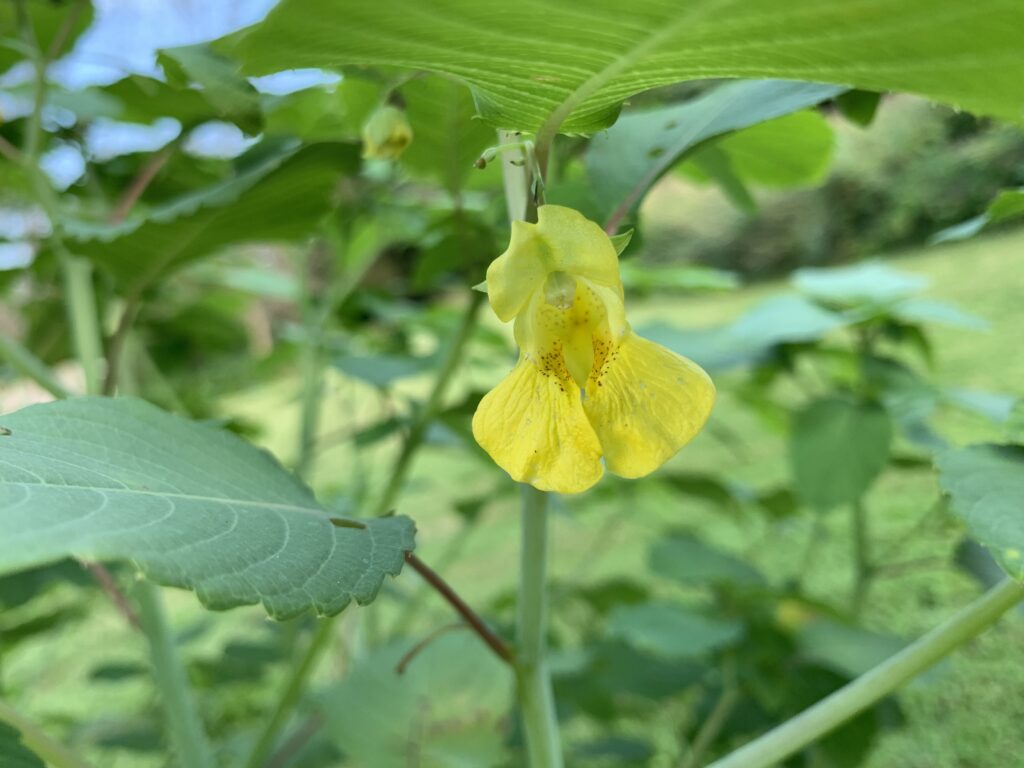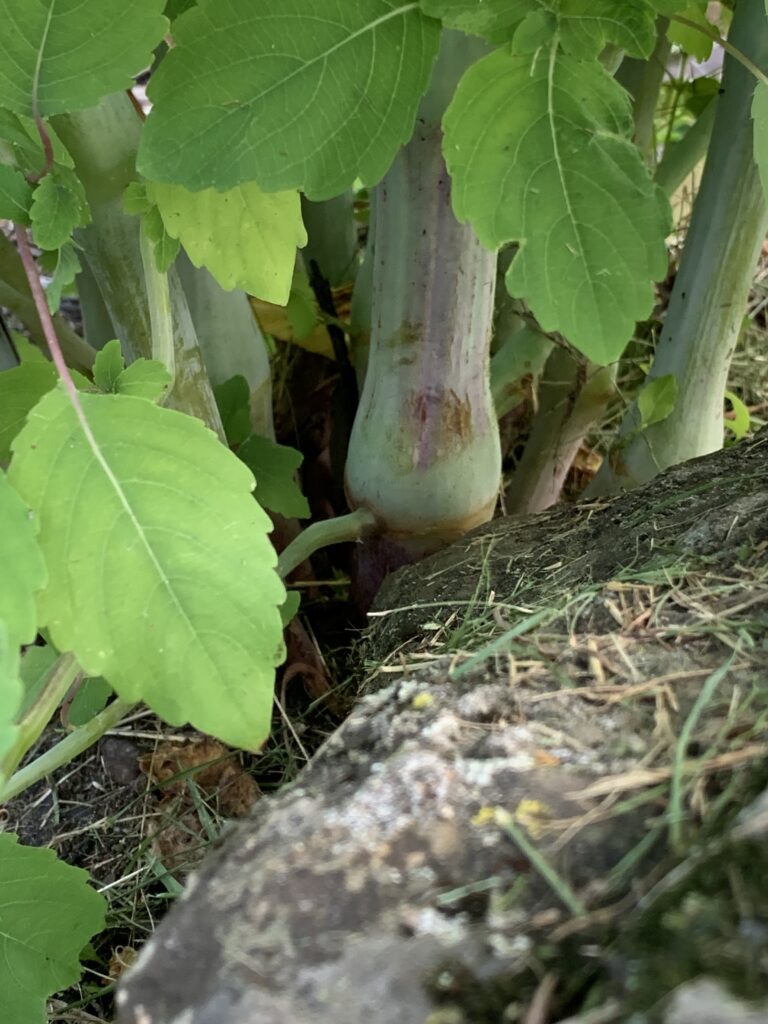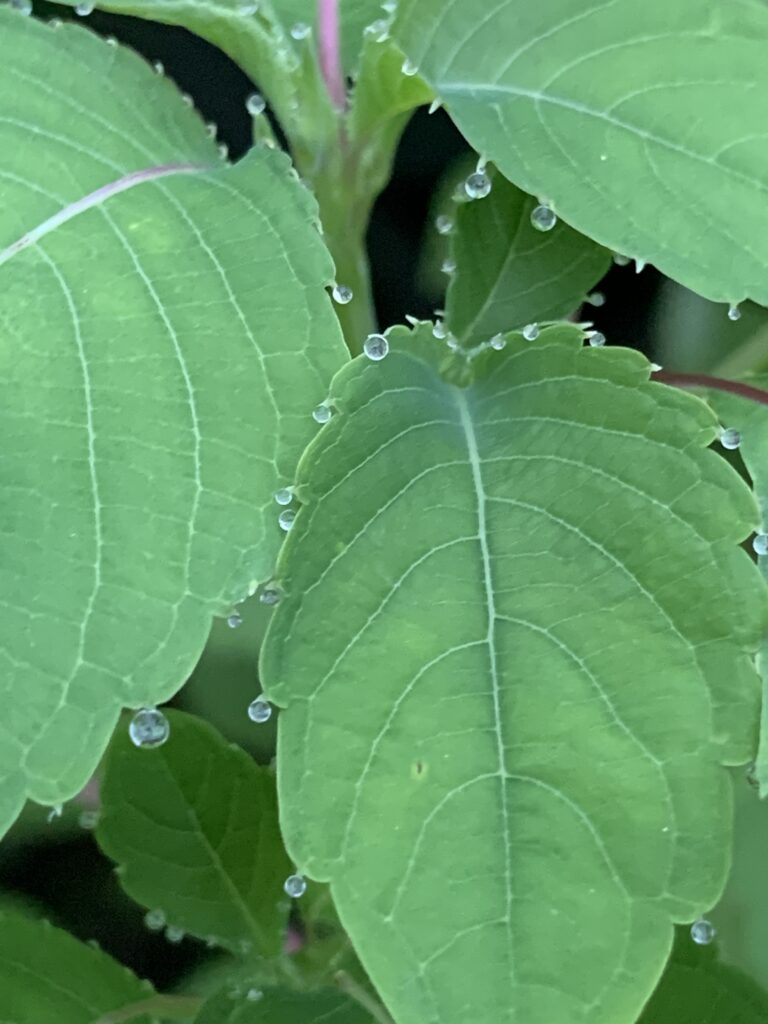Jewelweed is another plant with “weed” in the common name and, while it may grow like a weed, there is so much more to this fantastic native plant! Spotted Jewelweed Impatiens capensis and Pale Jewelweed Impatiens pallida are the two species that live here in the Capital Region of New York. Make sure to add this one to your native garden for a whole host of reasons!

Growing Conditions
Jewelweed prefers full to part shade but will tolerate full sun where the summers are cool. It also prefers wet to moist soil which can help with brighter locations. Mulching and occasional watering also help but for the most part, does not require any maintenance. The best part is that once the plant grows if in a thick grouping it will shade out most weeds.
The Plant
One reason to love this plant is that it sprouts in early spring and looks similar to radish sprouts. Then it spends energy growing tall thick stems that are full of a watery gel. This gel can help ease the pain of poison ivy and stinging nettle, so it is nice to have on hand. Some have even said it has anti-fungicidal properties and can be used to treat athlete’s foot.


Water from rain or morning dew delicately collects on the very tip of the leaves. Creating a stunning display to hunt for when the conditions are just right.
Close up of Pale Jewelweed Impatiens pallida leaves with water drops photo credit: Kristi Shepler
Bloom
The beautiful blooms are sometimes hard to find as they blossom beneath the leaves. However, the hungry hummingbirds know where to find them. This is one of the great native plants to use in place of a sugar-water feeder. Bumble bees are often known to curl up in the blooms as well to sleep. It is almost like a little Bee B&B! The blooms can start to emerge in mid-July and last into August.
Seed Pods
Another common name for Jewelweed is “Touch-Me-Nots” which relates to their spectacular spring-loaded seed pod dispersal. Once the plant is brushed by wildlife, the seeds are flung out, to spread the propagation of the plants. The pods will start to form once the bloom has been pollinated and should be ready by fall, if not sooner.
Propagation
Since the seed pod is spring-loaded, it is best to move quickly when collecting its seeds. This is done by closing your hand around the entire pod, but be careful not to accidentally brush the pod before closing your hand or the seeds will go flying. Once you successfully enclose the pod in your hand, ever so slowly loosen your grip. You will feel the pod burst open but it doesn’t hurt. Open your hand the rest of the way, with your palm up, so the seeds don’t fall away. Cold stratification is necessary for the seeds to germinate. Place the seeds in the fridge for two months or just scatter them in the spots you want them to grow in late fall/early winter.
Wild Ones
Wild Ones Capital Region New York is a chapter of Wild Ones a national organization promoting the use of native plants in the garden. Membership is a great way to support this mission on both a local and national level. Check out membership.wildones.org for more details including all the great benefits you will receive as a member. Our local chapter works diligently to provide specific information about our local native plants. This includes not only this blog but also handing out materials when we are out in the community. Even if you are a Wild One’s member, please consider donating directly to our chapter.
